#ballets russes
Text

Voodoo- Hamidou Banor by Baldovino Barani for FACTORY Fanzine XXXVI
#skull#art deco#ballets russes#hamidou banor#hamidiu banor#baldovino barani#voodoo#factory fanzine#new orleans#muscle#beauty#magic#divination#french quarter#ritual#southern gothic#othello#baron samedi
657 notes
·
View notes
Text
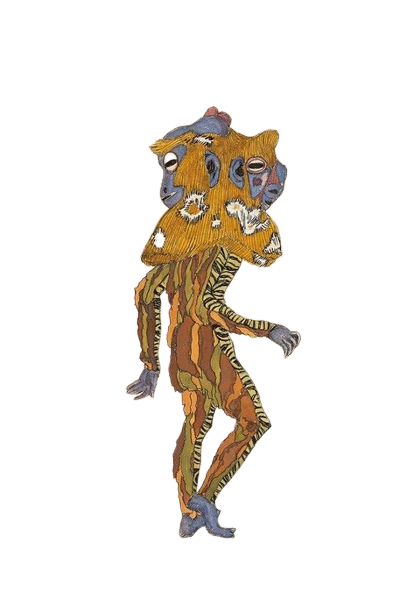
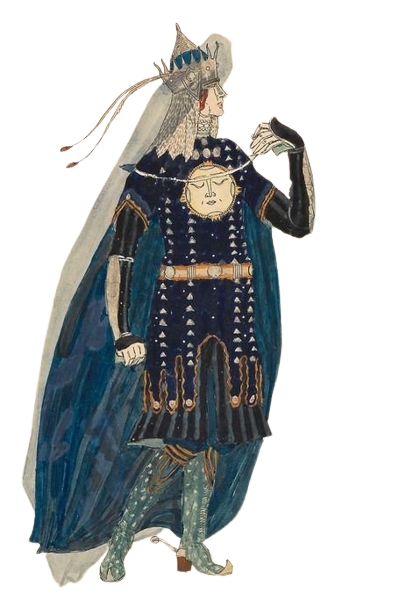
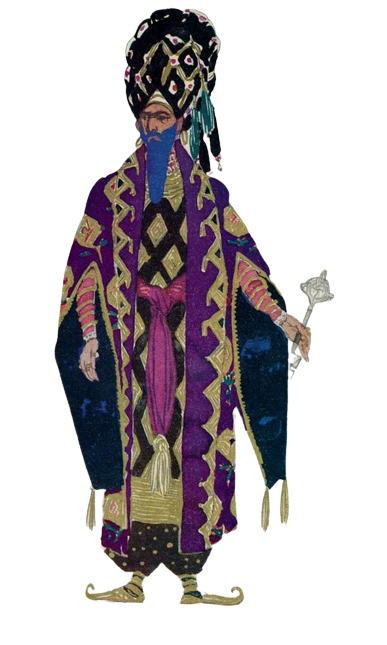



Early 1900s (+1) costume designs
#costume design#illustration#vintage#belle epoque#ballets russes#1900s#alexander golovin#fashion#historical fashion#drama#pngs#pngsformoodboards#transparents#stickers
2K notes
·
View notes
Text
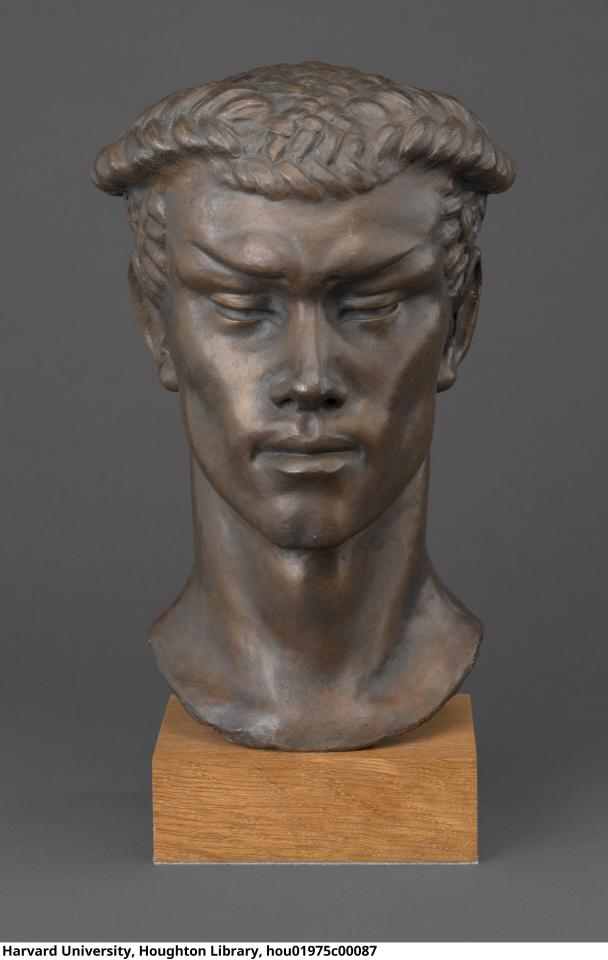


Troubridge, Una Vincenzo, Lady, 1887-1963. Waslaw Nijinsky as Faun in Afternoon of a Faun, 1913.
MS Thr 414.1, (80)
Houghton Library, Harvard University
67 notes
·
View notes
Text
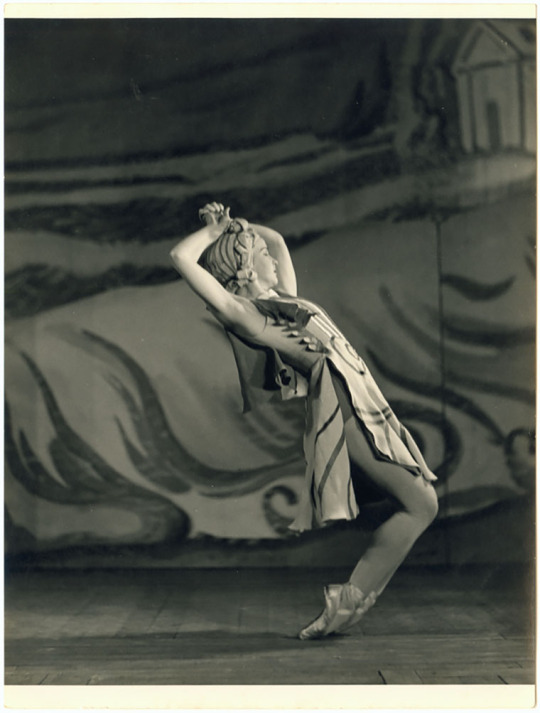

Alexandra Denisova as a 'Maiden' in 'Protée', Original Ballet Russe, Australian tour, 1939-1940. Anthony (photographer) | src Arts Centre Melbourne
#ballets russes#1930s#original ballet russe#Protee#Proteus#Alexandra Denisova#dancer#danseuse#dance pose#Tänzerin#tanzpose#performing arts#danzatrice#modern dance#modern ballet
73 notes
·
View notes
Photo


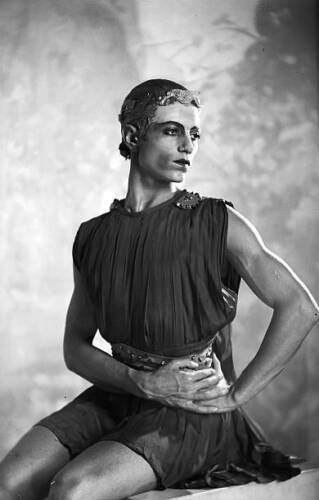

Serge Lifar in Apollon Musagète, choreographed by Balanchine in 1928 to music by Stravinsky, and with costumes by Coco Chanel, for Diaghilev's Ballets Russes
293 notes
·
View notes
Text

BARBIER (GEORGES) Designs on the Dances of Vaslav Nijinsky, NUMBER 131 OF 400 COPIES "on vellum paper", C.W. Beaumont, 1913 | Bonhams
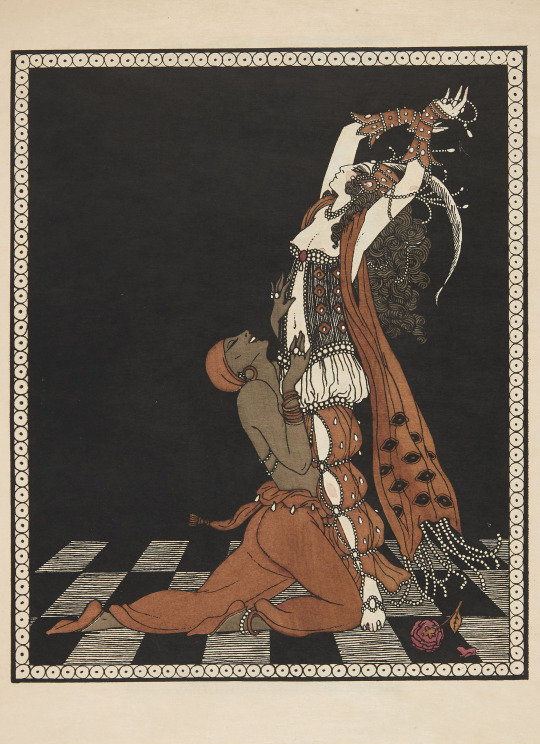
MIOMANDRE (Fr. de) – BARBIER (G.). Dessins sur les danses de Vaslav Nijinsky, 1913 | Christie's
#georges barbier#ballets russes#vaslav nijinsky#1910s#george barbier#nijinsky#ida rubinstein#scheherazade#danse#danseuse#danseur#tanzerin#tanzer#zobeide#slave#golden slave#zobeida#illustration#dessin
415 notes
·
View notes
Text
🎨 Valerie Jaudon

Valerie Jaudon (b. 1945) - Palmyra - 1982 - 84 x 114 in. (213.36 x 289.56 cm) - oil on canvas

Valerie Jaudon - Big Springs - 1980

Valerie Jaudon - Sebastapol - 1982


Valerie Jaudon - Quadrille - 2017
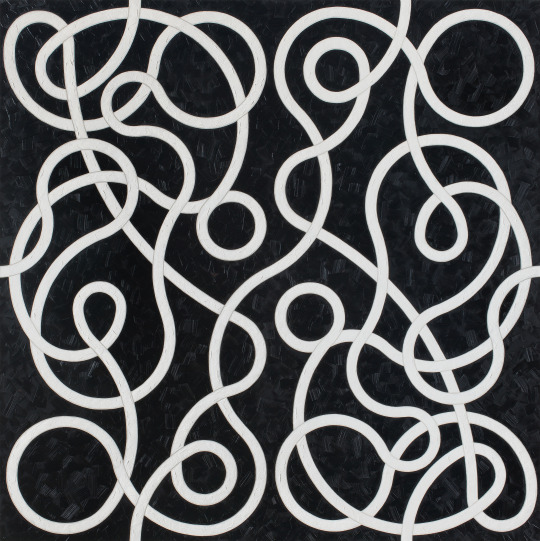
Valerie Jaudon - Passage - 2018
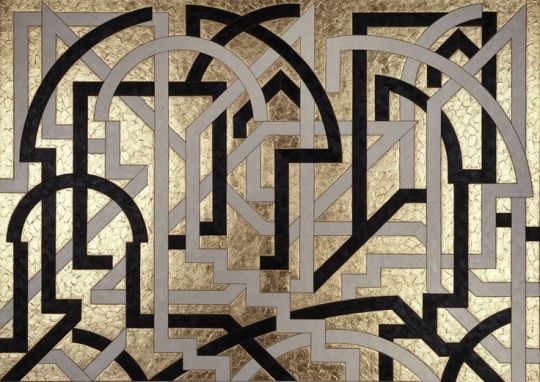
Valerie Jaudon - Egremont - 1985
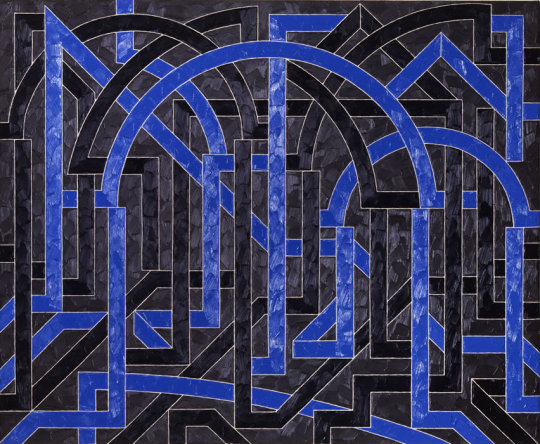
Valerie Jaudon - Manetta - 1984
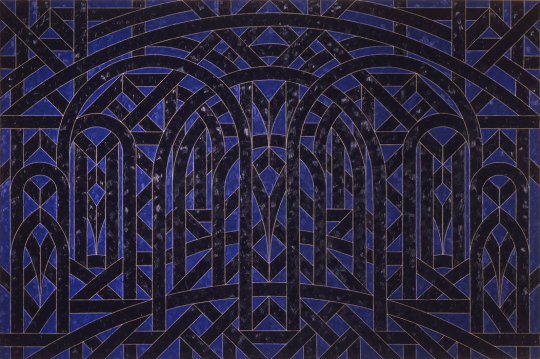
Arcola, 1982, 81 x 120", oil on canvas
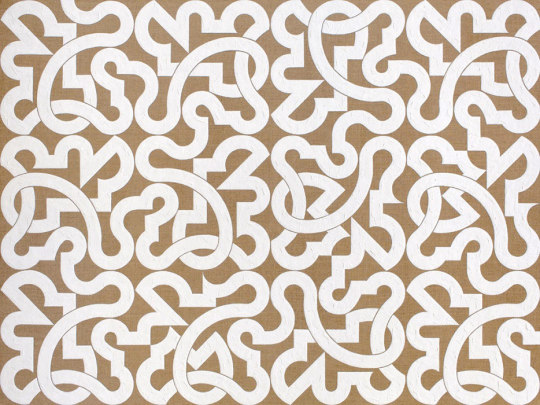
Saraband, 2014, 48 x 48”, oil on linen

Avalon, 1976, 72 x 108", oil & aluminum pigment on canvas
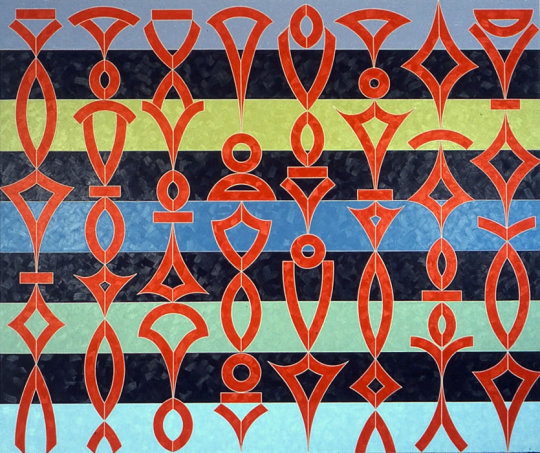
Ballets Russes - 1993, 90 x 108", oil on canvas
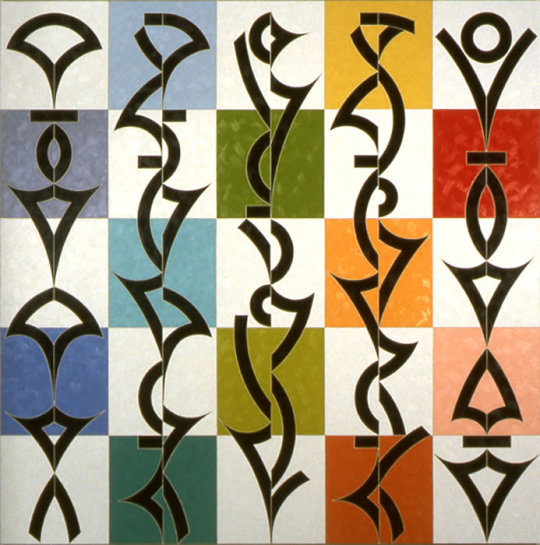
Social Contract, 1992, 90 x 90", oil on canvas

Meridian, 1980, 87 x 121", oil & metallic pigment on canvas
Valerie Jaudon is an original member of the Pattern and Decoration movement. Her art has been written about consistently in books, journals, magazines, newspapers, and catalogs. She is the co-author, with Joyce Kozloff, of the widely anthologized Art Hysterical Notions of Progress and Culture (1978), in which she and Kozloff explained how they thought sexist and racist assumptions underlaid Western art history discourse. They reasserted the value of ornamentation and aesthetic beauty - qualities assigned to the feminine sphere.
Valerie Jaudon
#Valerie Jaudon#art#design#manetta#egremont#Jaudon#quadrille#passage#sebastapol#palmyra#big springs#pattern & decoration#Art Hysterical Notions of Progress and Culture#ballets russes#social contract#sarabande#arcola#meridian
141 notes
·
View notes
Text
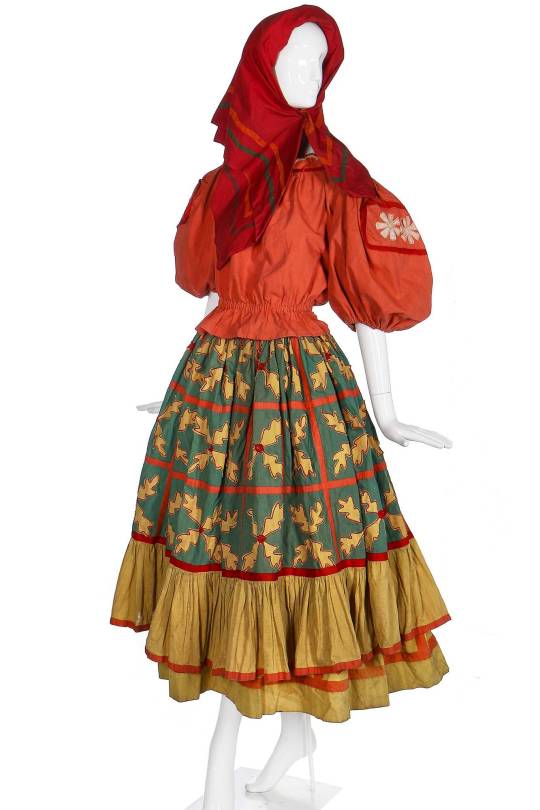
Costume from the Ballets Russes, 1937.
139 notes
·
View notes
Text
It's so insane and funny to me that film directors of biopics feel the need to add fiction to make the film appear more interesting.
Like. why.
You don't need to come up with anything to make history more compelling.
WHY make anything up, when Friedrich Nietzsche had to buy fucking silk underwears for Richard Wagner once, Abraham Lincoln did wrestling, Victor Hugo lived in a street of his own name when he was alive, Alexandre Dumas fucking shut down a racist with an epic comeback, Edward VII had a sex chair, Tsar Nicholas II has nudes, Igor Stravinsky and Pablo Picasso were arrested for pissing in public together, Oskar Kokoschka commissioned an Alma Mahler fetish doll which he likely had sex with, Roald Dahl wrote some weird and questionable fetish-fanfic books, Salvador Dalí sold a blade of grass to Yoko Ono for $10 000 because he thought she could do witchcraft with a real strand of his hair, etc etc...
Do we REALLY need to make shit up when we have all these batshit stories. DO WE REALLY??????
#currently still experiencing whiplash after learning more about ballets russes dancers#and seing that at serge lifar's 1958 duel with marquis de cuevas the marquis' witness was JEAN MARIE LE FUCKING PEN#DJAKZJSBSJB#going insane#anyways#history#history nerd#history facts#fun facts#classical music#art#art history#music history#ballets russes#and there's still SO MUCH more#scherzina ramble
54 notes
·
View notes
Text
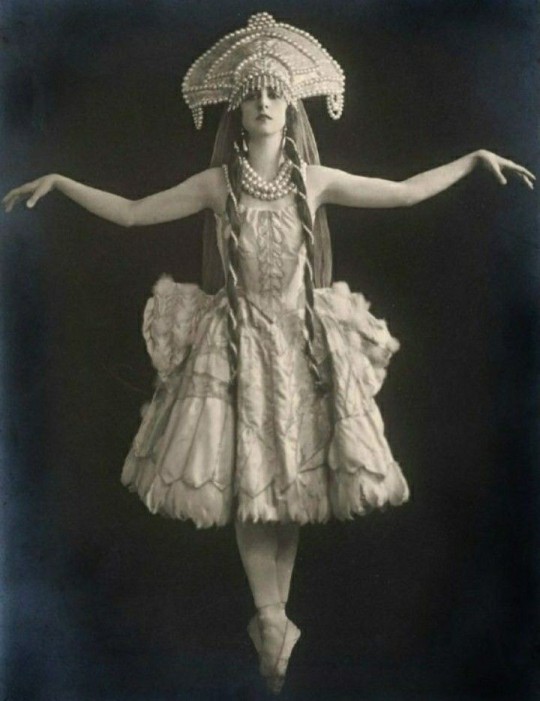
Tamara Platonovna Karsavina | Тамара Платоновна Карсавина
Born March 10th 1885 & Died May 26th 1978, Tamara was a prima ballerina not only of the Imperial Russian Ballet but also Ballets Russes.
#Tamara Platonovna Karsavina#Тамара Платоновна Карсавина#russian empire#ballet#prima ballerina#russian history#russian culture#balletcore#russian ballet#russian art#holy queue#ballerina#Imperial Russian Ballet#Ballets Russes#dance history
216 notes
·
View notes
Photo
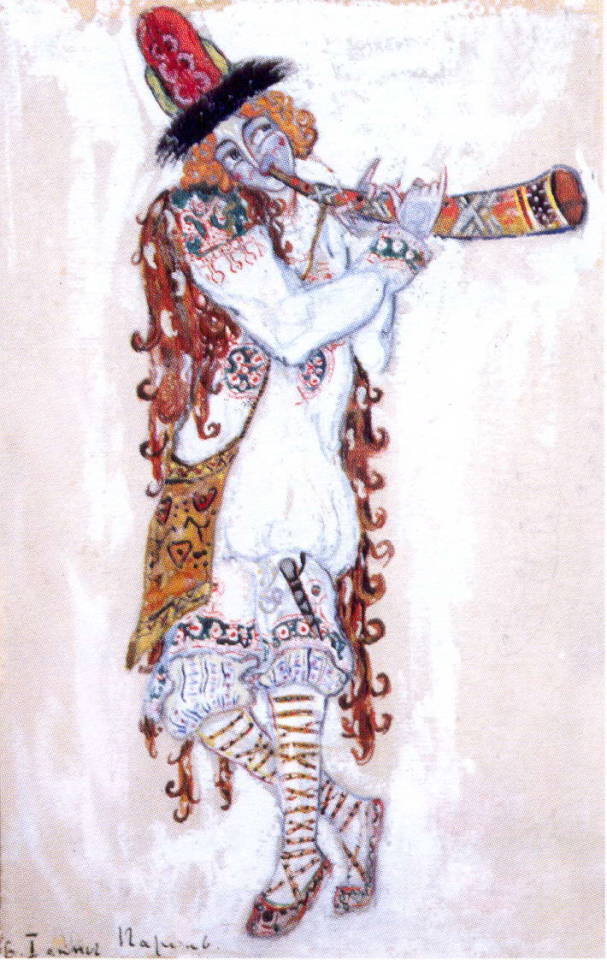

Costume designs for Stravinsky’s The Rite of Spring, Nicholas Roerich, 1913.
#ballets russes#igor stravinsky#the rite of spring#nicholas roerich#russian art#character design#gouache illustration#russian folk art#russian folk costume#theater design#costume design#art#my post
165 notes
·
View notes
Text

the higher the hair, the closer to God - Hamidou Banor by Baldovino Barani x FACTORY Fanzine
#ballets russes#hamidou banor#hamidiu banor#baldovino barani#factory fanzine#vintage#muscle#70s#pam grier#afro#big hair#the higher the hair the closer to god#topiary#beauty
115 notes
·
View notes
Note
What's a ballet with real snazzy costume work, in your humble and/or professional opinion? c:
Oh, you’ve activated my trap card - asking about costume design and ballet and not expecting me to barf up the entirety of my PhD. I’ve also done work on the ballet blancs costumes (Giselle and La Sylphide specifically) but they are interesting on a theoretical level and not so much visually, so I’ll skip that.
So here are some personal favs of mine - the highlights, if you will. Caveat: long post, and mostly limited to the work of the Ballets Russes, because they are my longtime obsession and I think (and have argued) for their role in fundamentally changing stage and costume design (to say nothing of dance, and George Balanchine can sit the fuck down). I didn’t put that in my thesis but I wanted to.
Anyway tldr in the first decade of the 20th century a troupe of dancers from the Russian Imperial Ballet (later the Mariinsky) travelled through Europe under impresario Serge Diaghilev, for what became known as the Saisons Russes, or Russian Seasons. They performed both opera and ballet, and are probably best remembered today (if at all) as the troupe that danced the premier of Stravinsky’s Rite of Spring and caused a riot at the Theatre des Champs Elysées. The eminent artists that worked with them include Debussy, Cocteau, Picasso, Chanel - and these are only a few recognisable names. But my focus was primarily on the Russian roots of the ballet, in their visual language and presentation of gender and nationality, more precisely around the work of artist Leon Bakst and dancer Vaslav Nijinsky.
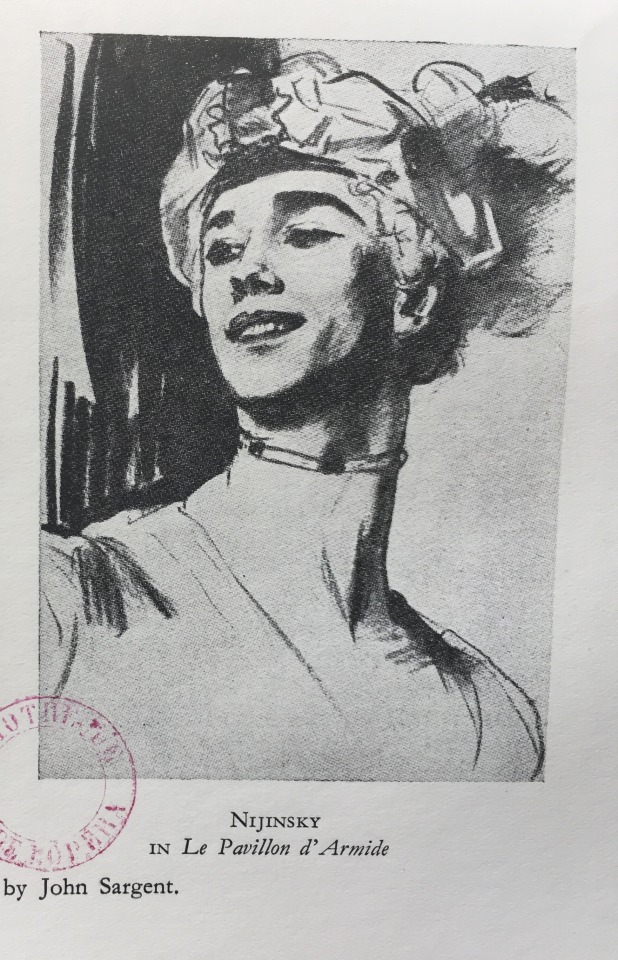
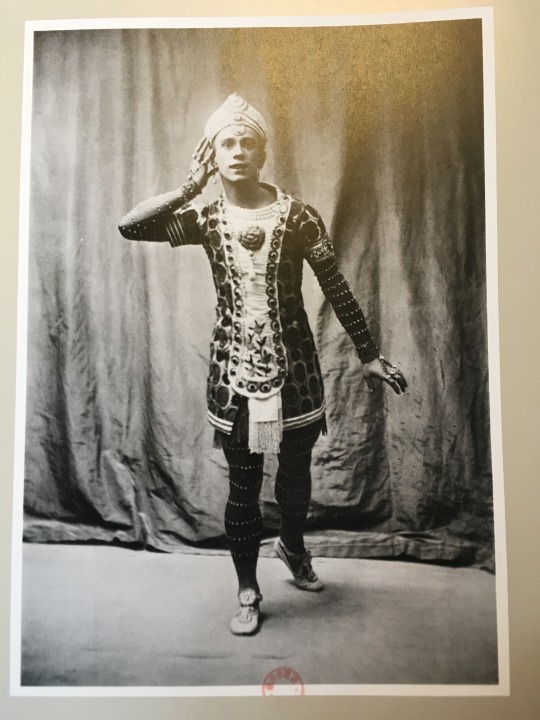
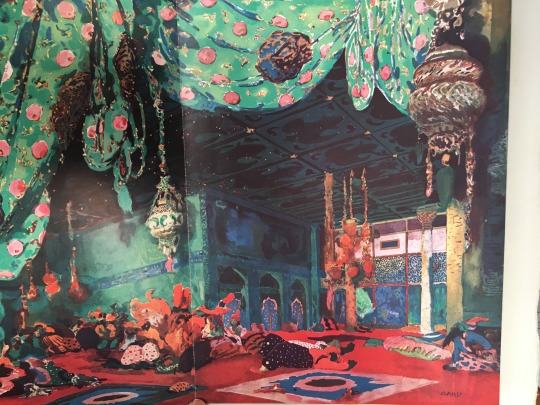
Second image of Nijinsky from Le Dieu Bleu, and Bakst’s set design from Scheherazade (1911). These are mainly photos and scans I have from the year I spent in the archives of the Palais Garnier (the Paris Opera) where all the good stuff is.
The crux of why these costumes are insanely interesting to me is because they are very specific to their time - they are a product of a resurgence in nationalist interests in Russian art (Diaghilev ran Mir Isskustva and worked with Savva Mamontov before he organised the BR) as well as a carefully crafted, highly artificial presentation of Otherness, expressly destined for export to the west. French audiences in the first decade of the 20th century (because there is a stark cut-off at the beginning of WW1) still had an appetite for Orientalism, despite their flagging colonial power. What the Russians brought them was compelling mix of performative Orientalism just vague enough to be appealing and fantastical, visually intriguing, and refreshing to a society that had otherwise come to recognise itself as decadent, fallen “victim” to modernity. In the athletic virtuosity of Russian bodies, Bakst’s exotic visual language and the soaring music of Rimsky-Korsakov and Stravinsky, the French devoured what they deemed a sort of noble savagery (yes, that kind). Despite the oversaturation of Orientalism in painting throughout the 19th century, the French identified a kind of masculine vigour and freedom in these live performances they found they themselves lacked, and longed for. Primitivism, as demonstrated in myriad ways by the BR, was for them a way to reconnect with a virility that they felt modernity had stolen, or at the very least, weakened. If you think this sounds eerily akin to the discourse around mounting desire for war to “cleanse” or “reset” Europe during that same period, you are right.
A few of Bakst’s lesser known designs from the archive, for context (including a reprod by Barbier which I don’t have the OG of but is saved in my Bakst folder so please take my word for it). I have a thousand more of these but tumblr has an image limit per post 😤

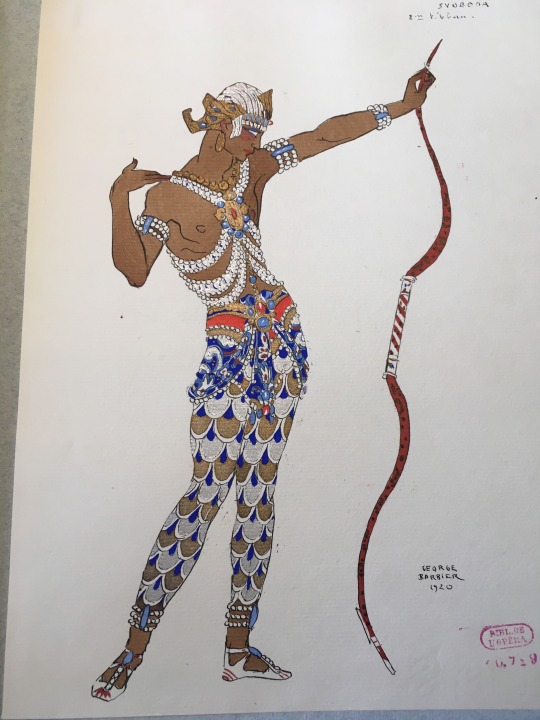

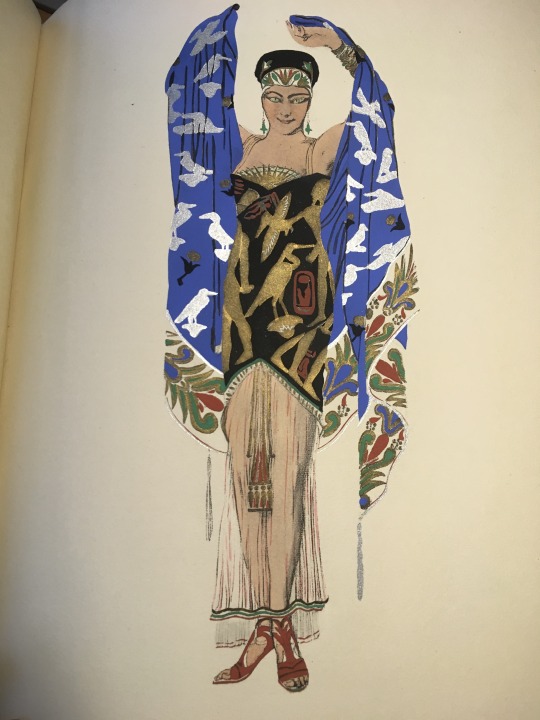

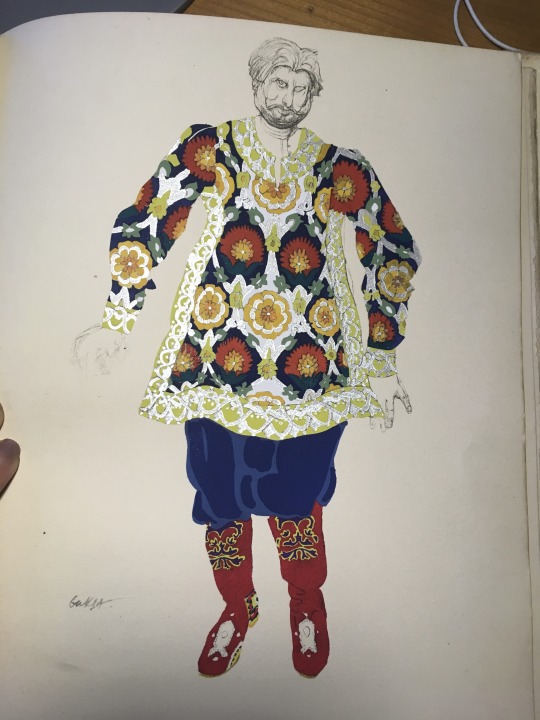
Tamara Karsavina, who often performed with Nijinsky, and one of my most beloved historical figures. The existence of a strong classical ballet cirruculumin the UK today is in part thanks to her.

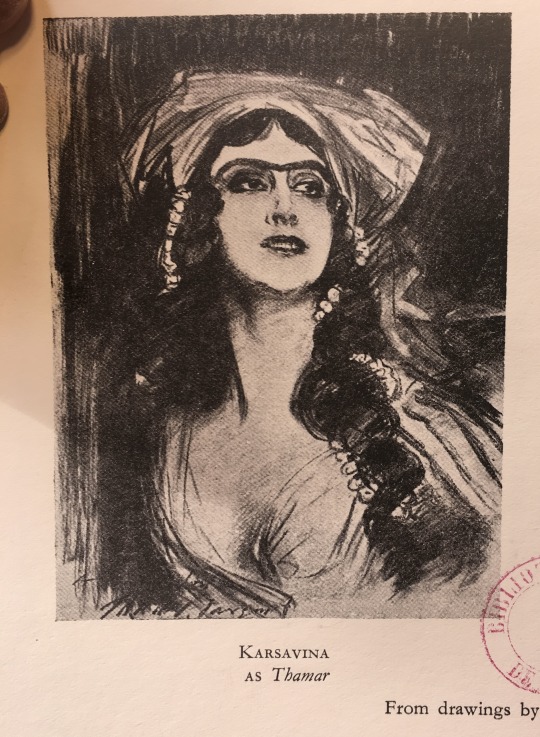
One of her most famous roles, as the Firebird:
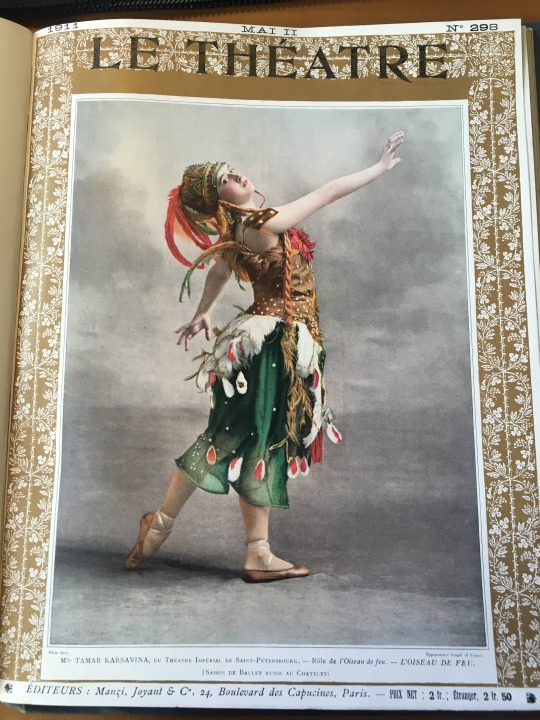
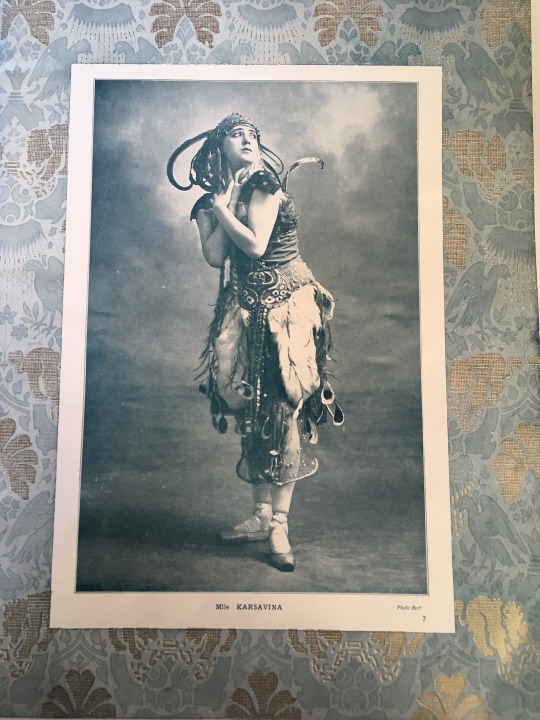
Nijinsky is by far the most interesting figure to come out of the BR. He combined virtuosity and strength (that most audiences identified as masculine) with a glittering, joyful, and expressive queerness on stage (and off). Some of his greatest roles are expressly feminine in their costume design: Le Spectre de La Rose, for example.
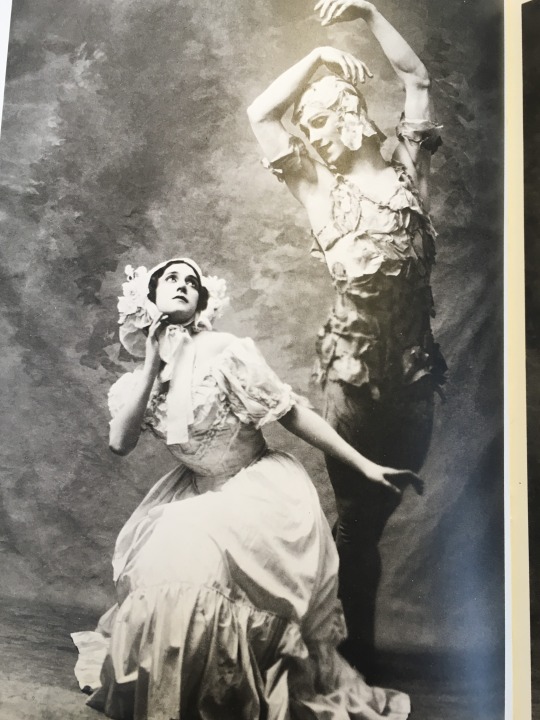
There’s a colorised version of this out there where you can see every pink rose petal on him.
While others are much more decorative but still markedly Orientalist (or Russian-Orientalist): Le Dieu Bleu, La Peri, Les Orientales, L’Oiseaux de Feu.

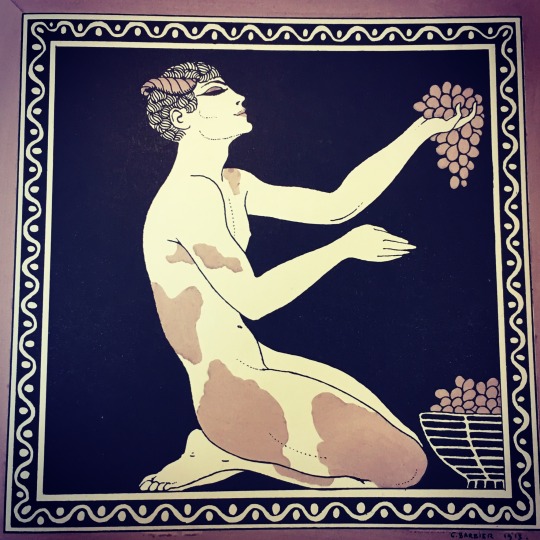
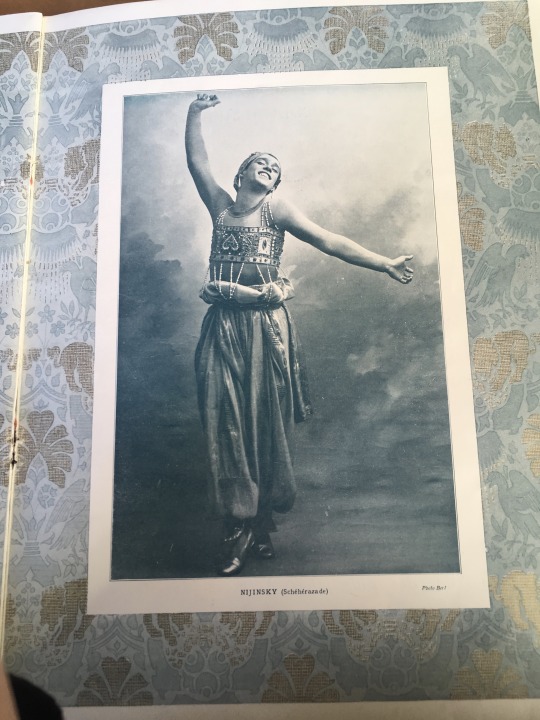

This last image above is not, the last I saw it, in a private collection. It hangs above the vestibule of the Palais Garnier archives (also Napoleon’s private hangout room) where it faces the sort of “diptych” version that features Karsavina, and on occasion I would stand below them and weep quietly).
Either way, there is an argument to be made about Nijinsky’s physicality and, more importantly nationality as a kind of avenue of permission through which the French could admire both his beauty and athleticism and even, to a degree, imagine themselves in his place while still maintaining that safe distance of Otherness.
But I would argue that his greatest role was the Golden Slave in Scheherazade, a wild, erotic orientalist fantasy that has little to nothing to do with the actual tale of Scheherazade. In it, Nijinsky - bejewelled, wild, ecstatic, (and yeah often in blackface) - cavorts with Zobeide, the Sultan’s favourite, in a very sexually explicit storyline. Both characters are equally decorative in their costumes, and both, in real life, were recognisably queer(ed) figures. It’s Scheherazade in particular that helped accelerate an obsessive trend in fashion (Paul Poiret was at the centre) for Orientalist design. Bakst himself did some silhouettes that are hard to distinguish from his costume design, and through the remarkable illustrations by Paul Iribe, Georges Lepape and Georges Barbier, we can see some of the blatant repetition of motif and silhouette in these ensembles that are designed, among other things, to be worn to the theatre.
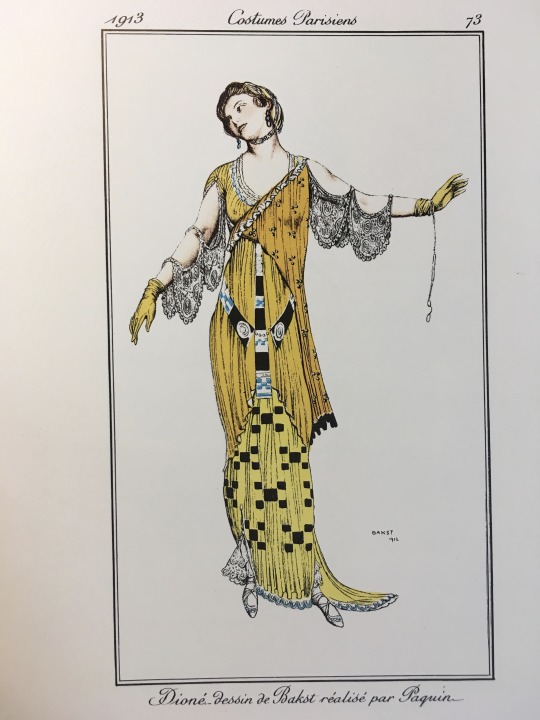
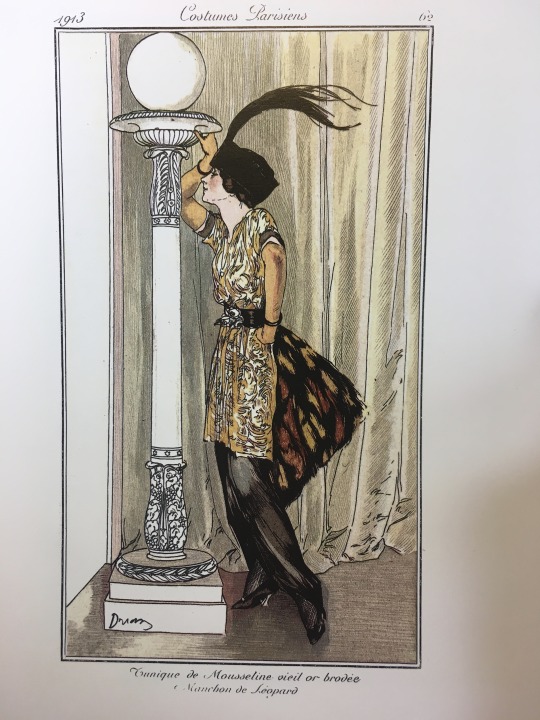
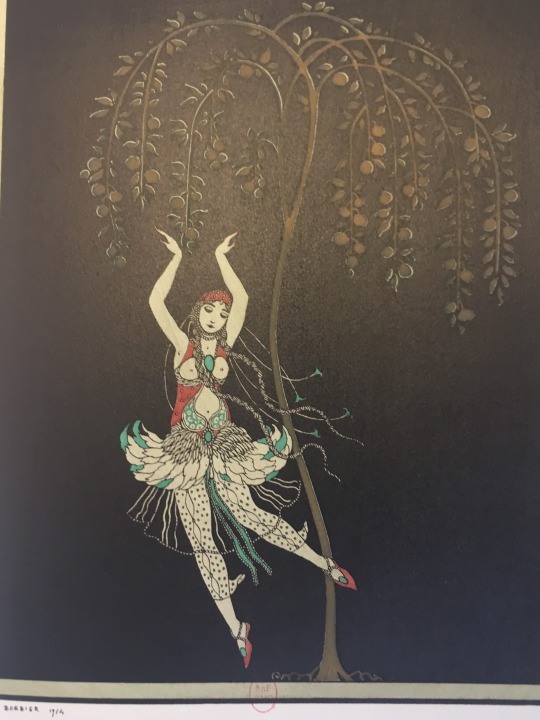
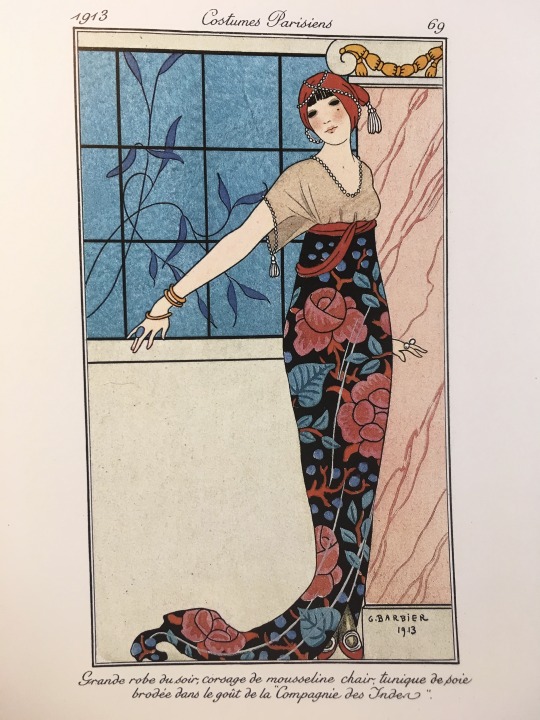
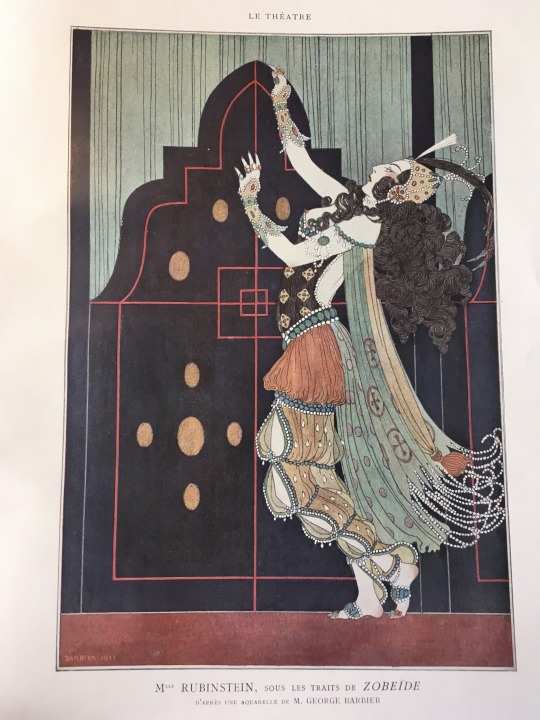
3rd and 5th are depictions of costumes of the Firebird and Zobeide respectively; the rest are fashion plates. This doesn’t even include the lampshade dress - which I don’t have a handy picture of, but have seen in real life - that is a pretty blatant melange of the Firebird and Zobeide, as designed by Poiret. Below is one of my favourite examples: A woman in a lampshade-style dress, standing against a backdrop not unlike Bakst’s set design above, attended by a archetypal oriental servant wearing Nijinsky’s Golden Slave costume.
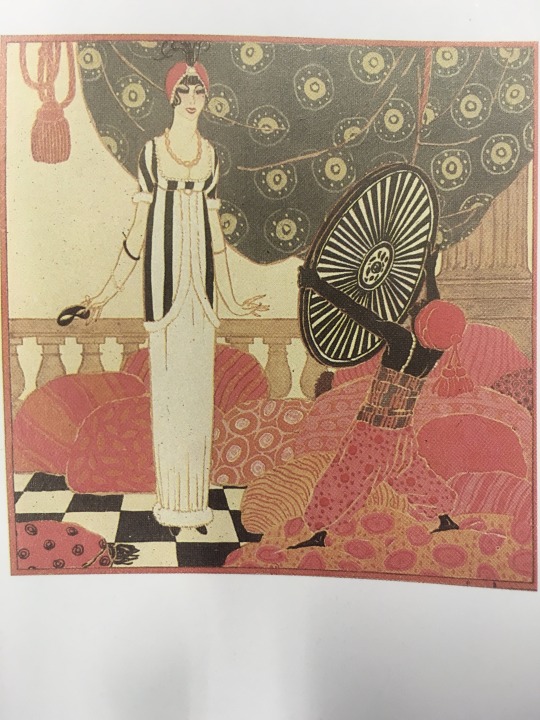
These motifs also proliferated in advertisements and in all kinds of other consumer products (perfumes, for example, and decorative objects). Thus, there’s a performative aim in wearing these designs that I read as a sort of pseudo-kinetic empathy (and can funnnily enough probably be compared to cosplay). There is an attempt here to channel what is being presented onstage, to reenact it, to physically embody it, in the way that fashion is, at its core, a tool through which to construct identity. That the French pulled inspiration from an openly queer man leaping across the stage dripping in jewels, and from femme fatal-style odalisques, says a lot about the visual and cultural impact the BR had on the theatre-going public at the time.
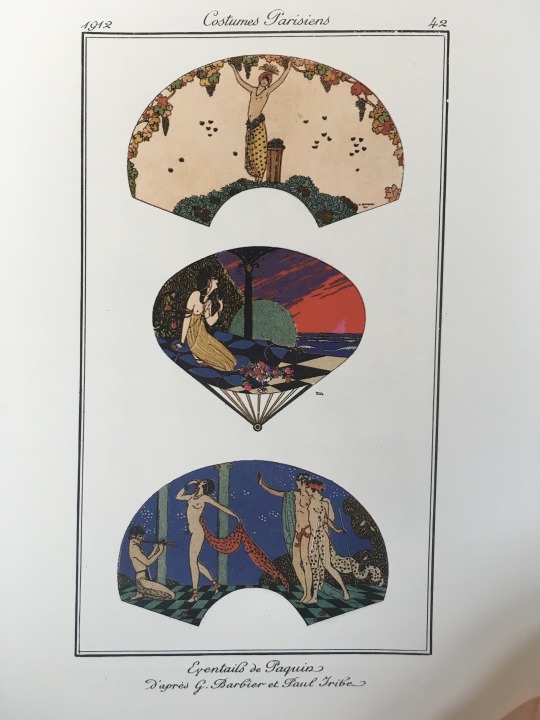
You can see in these fan designs by Paquin some pretty obvious references to the BR aesthetic: L’apres-midi d’un faune, Daphnis et Chloe, Scheherazade, even a little Le Pavillon d’Armide in that first one.
Nijinsky was not the only one to queer the stage: despite not being a dancer trained to the level of the BR troupe, Ida Rubinstein, no doubt purposefully channelling Sarah Bernhardt, was also a beloved stage presence, whether as the sly harem favourite Zobeide or as the strikingly androgynous St Sebastian, gayest of saints.

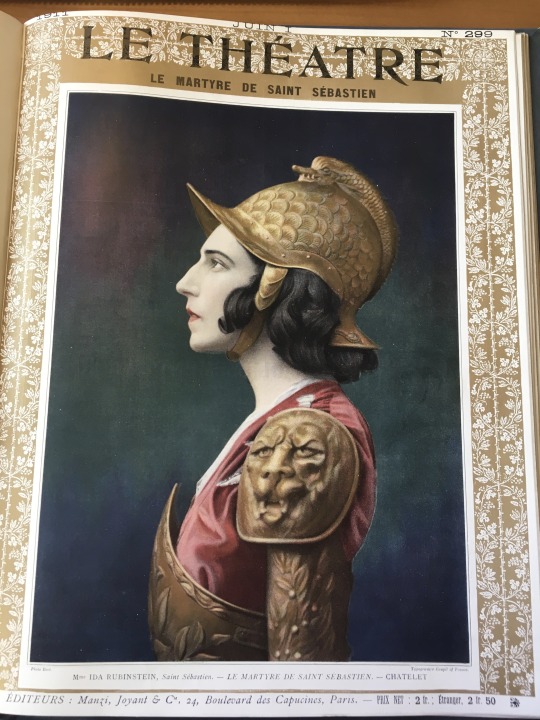
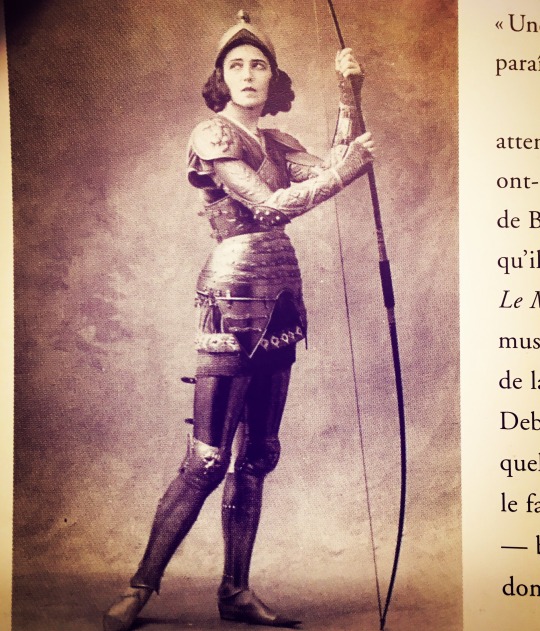
This is not to say there haven’t been wonderful and brilliant costume designs since - and quite a few known fashion designers working alongside dance companies, to great success or otherwise. I will, however, shoutout my favourite contemporary work: Akram Khan’s Giselle, which has everything and yet nothing to do with Adolph Adam’s 1842 piece. I don’t even want to post pictures because the costumes of the nobles (the landowners, in this very apocalyptically late-stage capitalist version) are so fucking breathtaking in relation to the overall design, and their entrance itself is probably one of the most spectacular parts of the ballet, that all I can say is just see it. Or buy the dvd. What Khan does gesturally is beyond words, what Vincenzo Lamagna does with Adam’s original score is visceral and haunting and churns my insides. I make a point to see it live at least once a season when it’s touring with the ENB, and I will do so until it leaves the repertory or until I die. It’s my contemporary Scheherazade. It’s a gesamtkunstwerk.
Tldr Leon Bakst is one of the greatest costume designers of the 19th and 20th century and criminally underrated.
It’s not ballet, and it’s not the sumptuous costumes from Boris Godunov, but as a bonus here’s my favourite image of opera star Fedor Chaliapine as Ivan the Terrible.
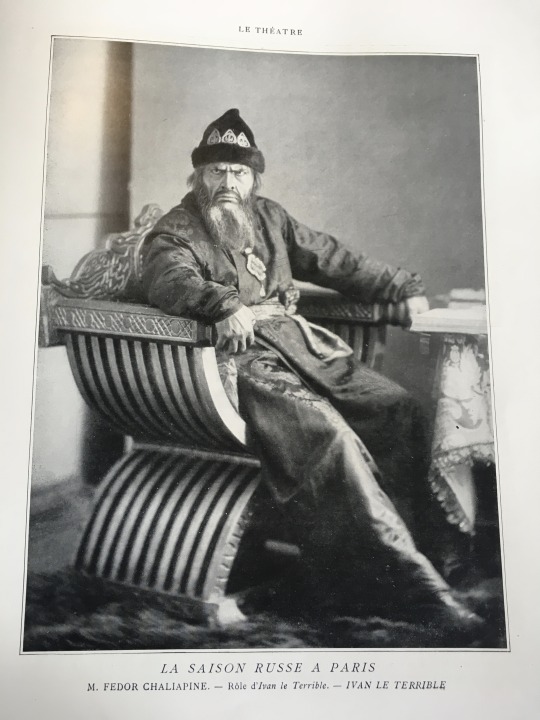
#Thank you for the enclosure enrichment#And for coming to the tldr of my thesis#ballets russes#vaslav nijinsky#Leon bakst#fashion design#academic indulgence hour#Art history
46 notes
·
View notes
Text



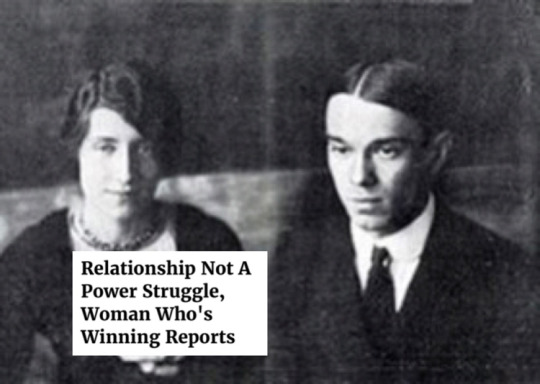




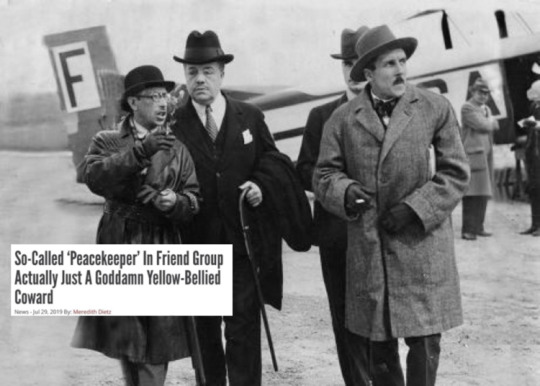
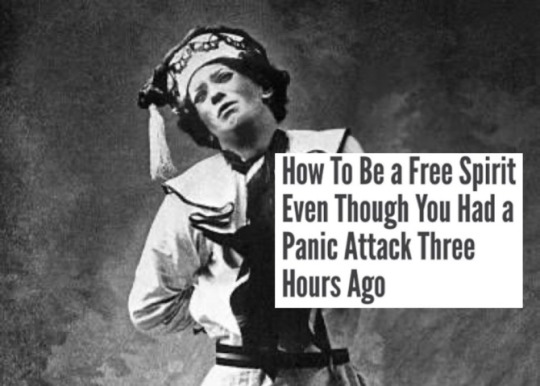
ballets russes as text posts (or headlines) pt. 2
#*throws this into the void and hides under blanket* GOOD NIGHT#but srsly isn’t this what we’ve all been waiting for#and i’ve got so much more ohohoho#ballets russes#vaslav nijinsky#sergei diaghilev#igor stravinski#bronislava nijinska#ballet
40 notes
·
View notes
Text
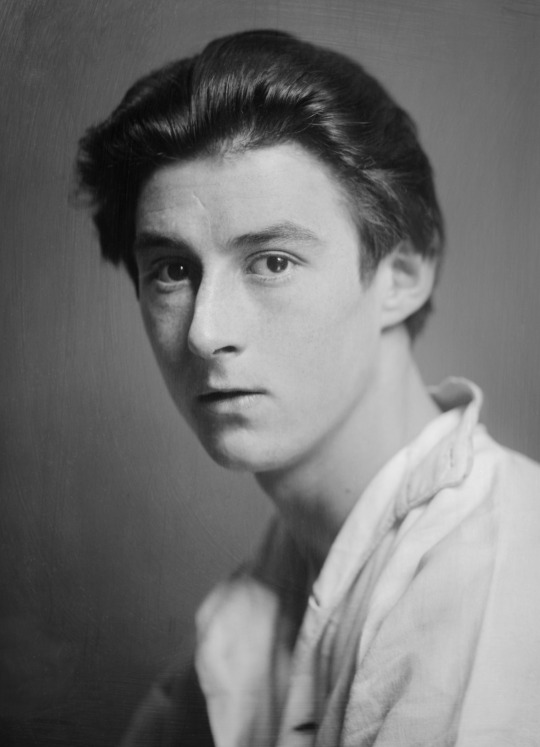
Anton Dolin, Dancer, London, 1923.
©E.O. Hoppé Estate Collection.
24 notes
·
View notes
Text



Sonia Delaunay, Costume for 'Cléopâtre' in the Ballets Russes production of 'Cléopâtre' Paris, 1918
#sonia delaunay#costume design#costume#cleopatra#ballets russes#French design#french art#french artist#fabric design#textile design#woman artist#women artists#art on tumblr#modern art#art history#aesthetictumblr#tumblraesthetic#tumblrpic#tumblrpictures#tumblr art#aesthetic#beauty
23 notes
·
View notes